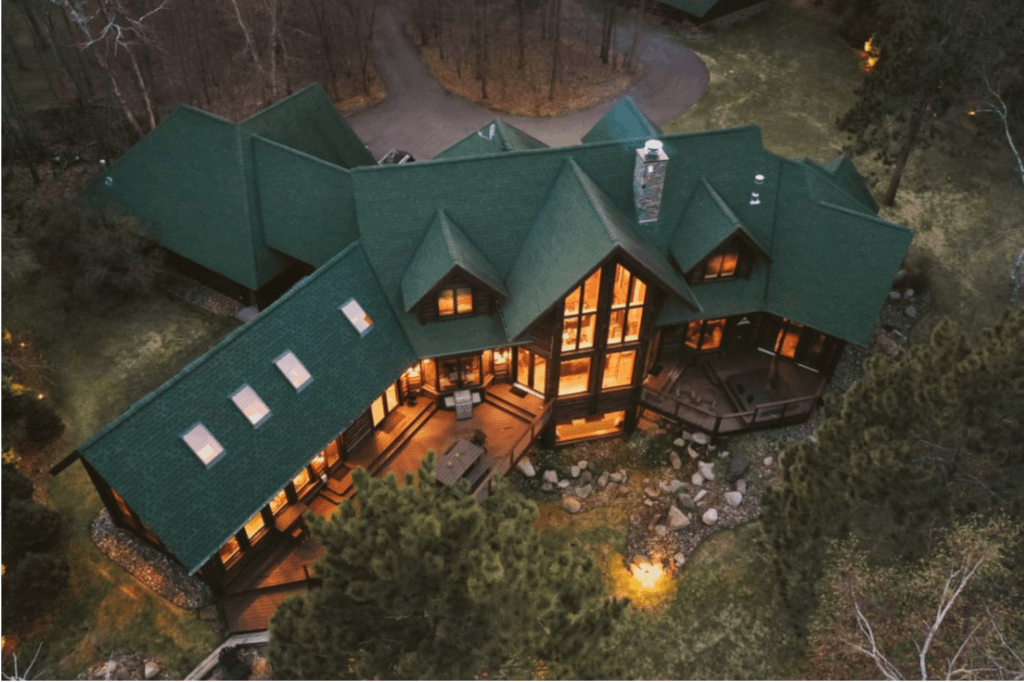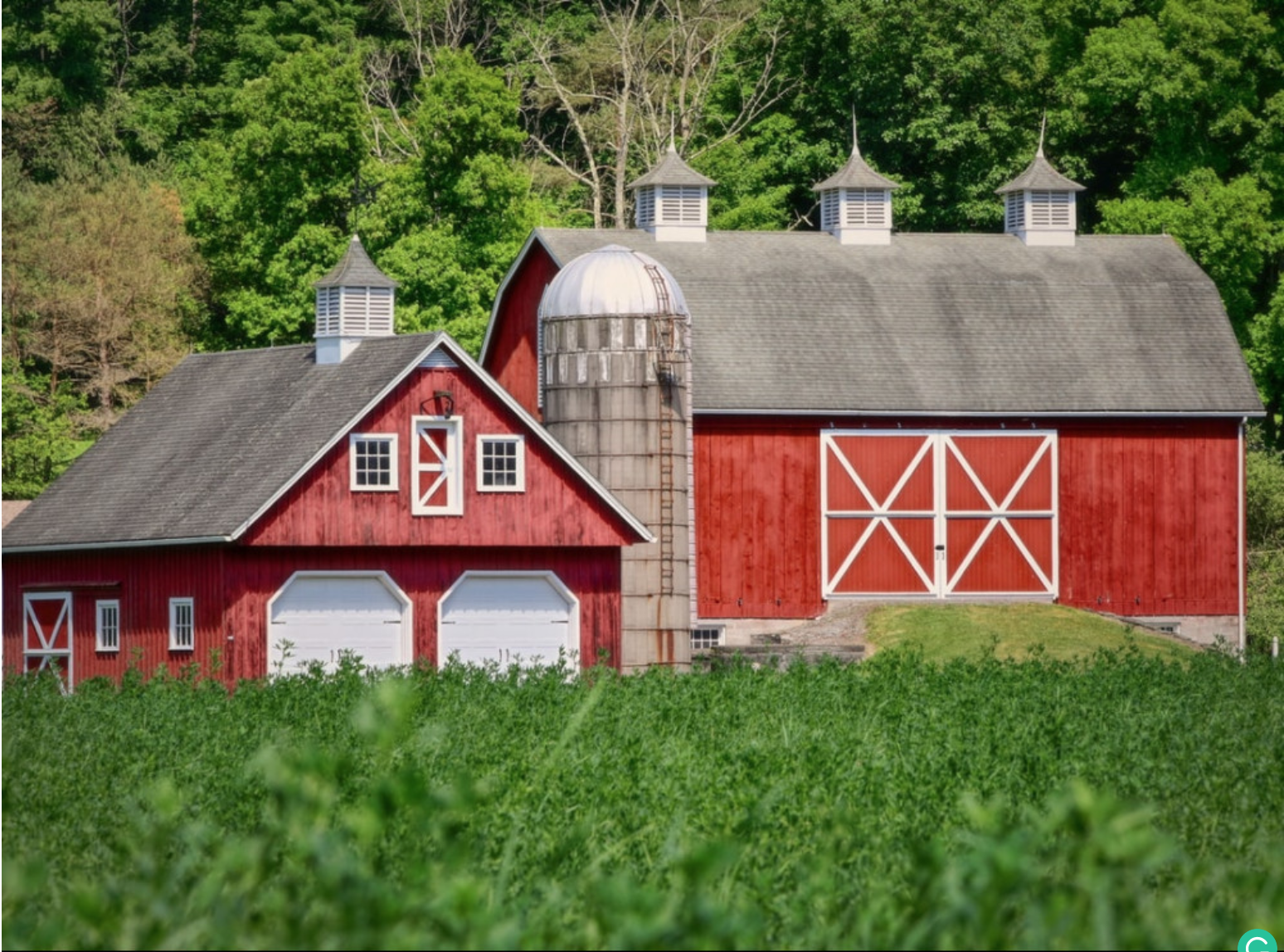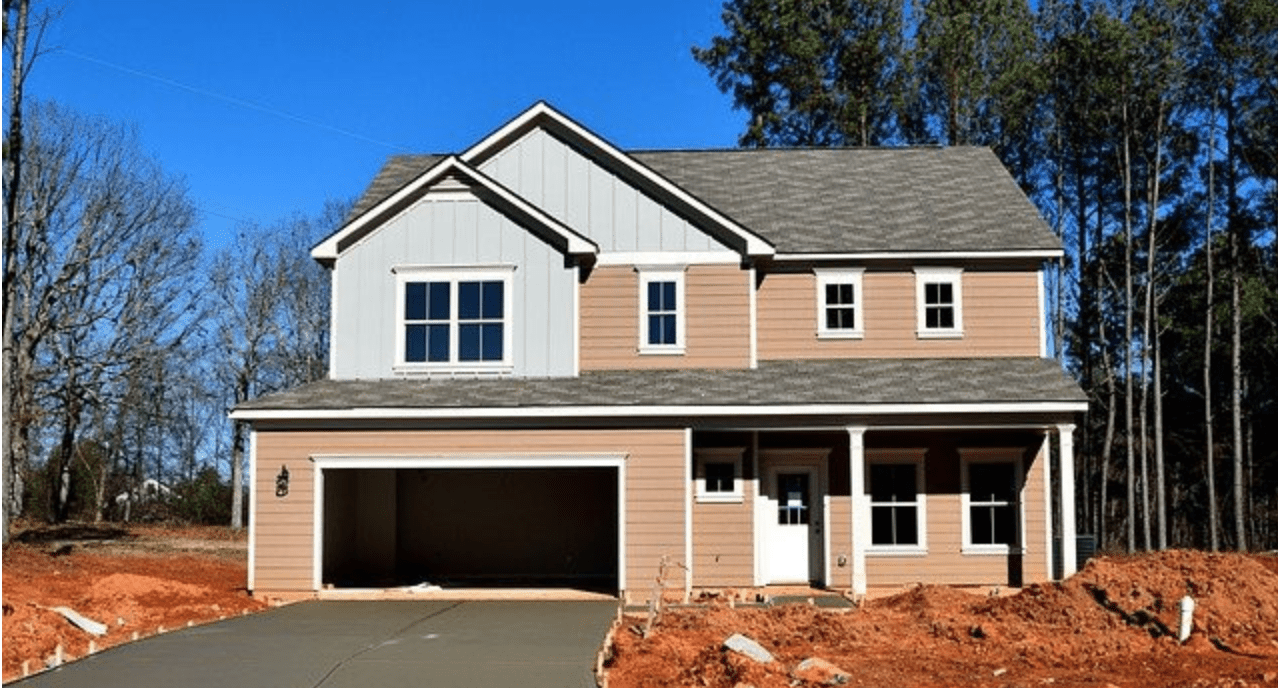You have probably noticed that most houses in the US are made of wood. For people living in other countries, this may seem odd. It was also surprising to me when I came to the US after living in Spain for 26 years and seeing mostly houses made of wood. The picture above shows the structure of the house we recently built in Lewes, Delaware –as you can see, it is all wood. There are logical reasons why Americans prefer wood as the primary building material.
The US vast forest industry, expertise in transportation and distribution makes wood accessible and relatively inexpensive. Labor costs for wooden houses are also comparatively low because, unlike brick layering, houses made of wood do not require very skilled workers. Together the low cost of wood and labor is the main reason why houses made of wood are popular in the US.
Let’s go over the main reasons for the popularity of wooden houses in the US, together with some advantages and disadvantages.
Tradition

When British people started building large settlements in the US centuries ago, wooden houses were the norm. Wood was accessible, easy to work with, and that enabled the fast building of numerous homes. Houses built with wood became almost a landmark, and their popularity is still present.
Building with bricks would have required much more time and effort, and it would have been impossible to accomplish the same results.
But is tradition the main reason why Americans prefer houses made out of wood?
I don’t think so.
Tradition certainly helped transmit the custom and craftsmanship from generation to generation, but there was something else that made the US favor wooden houses over brick houses: price.
===> You may also want to read Why Are Barns Painted Red?
Price
Although many of us won’t admit it, money is often the most critical decision making factor in life. The construction industry is not exempt from this. In general, it is cheaper to build a house made out of wood than made out of brick and concrete. And this is the main reason why the US loves to build houses out of wood.
But what makes it cheaper?
The USA is a big country, and it’s hard to generalize, but in most areas of the US, both material and labor are cheaper when your primary building material is wood.
Wood is economical in the U.S. because of the vast forest industry and expertise in transportation and distribution. Wood is lighter than bricks, which makes transportation costs lower.
Labor cost is also low because builders and contractors use prefabricated structures for their wooden houses that do not require skilled workers.
According to Salary.com, the average bricklayer salary in the United States is $53,092. This is 43% higher than the average construction worker salary of $37,114. That is, assuming builders hired these workers, a house made of brick may cost 43% more than wood for labor.
Philadelphia is an example of a city that has experienced a shift away from structural brick. The reason for this shift is mostly about costs. According to this PBS article, the change started after WWII when people demanded suburban homes that looked different from urban developments.
Fewer brick homes meant less material, and fewer masons were needed. As a result, brick houses are not in high demand right now, making material (bricks) and labor hard to find, which increases the price.
Advantages of Houses Made of Wood

We have already gone over the price advantage. There are a few more pros other than a lower price tag.
Environmental Impact
If the wood is harvested responsibly, and new forests are made to replace the old ones, wood is more environmentally friendly. These natural materials leave little waste.
Making bricks, storing them, and disposing of them after no longer in use is bad for the environment. Brick production increases fuel consumption.
Design Possibilities
Wood is flexible and light. You can build almost any kind of home with it, and the design possibilities are endless, from the attic to even the basement. Because it is more lightweight but still strong and durable, you can make nearly every family home’s shape and size. People like to have their design touches in their space, and wood gives them plenty of opportunities.
Of course, custom-designed houses are expensive, even if they are made of wood.
Safety for Earthquakes
Although wood has certain safety disadvantages, it also has some important advantages if you live in an area with potential earthquake activity. Because it is flexible, wood is more resistant to earthquakes. It bends and restores its shape, unlike rigid bricks. People living in earthquake-prone areas are building homes with wood to increase their safety.
I speak from personal experience as I was in Los Angeles when the 1994 Northridge earthquake hit southern California. We drove over Santa Monica the next morning and saw several buildings with brick walls that had fallen like legos.
Easier Rebuilding
After a natural disaster, homes have to be rebuilt. Using wood enables fast building and lower costs. Additionally, if you need to repair just particular walls, it can be done much easier.
Concrete homes are safer for specific disasters, but the rebuilding process is slower and more expensive if they get damaged.
===> Learn why houses look small when being built.
Disadvantages of Houses Made of Wood

As good as they are, houses made of wood have certain disadvantages. Homeowners should be aware of the following:
Decreased Fire Resistance
Wood is treated to increase its natural fire resistance properties, but it can still catch fire faster than good quality bricks. This is especially important for those living in areas where wildfires present a problem. Insurance companies understand their risk well, so paying insurance covering fire damage will be more expensive for wooden home owners.
More Insulation Necessary
Wooden frames need more insulation material than concrete homes. Insulation is essential in conserving energy, reducing costs, and saving the environment. Houses built with wood can have excellent insulation, but more work and money is needed to accomplish it.
Humidity and Pests Problems
Concrete can have a moisture problem, but wood is more prone to it. The problem is that if it remains unnoticed, you can end up with structural damage, and it can be both expensive to repair and dangerous.
Wood can also get invaded by termites, and the result can be damaging. Concrete is safe from pests and related problems.
Low Tornado Resistance
We learned from The Three Little Pigs fable that a house made out of bricks is harder to blow down.
It’s true.
Unfortunately, some parts of the USA are frequently visited by tornados. Houses made of wood have less of a chance to survive such a powerful natural occurrence. Many people living in those areas have concrete basements that are used as a safe hiding place in case of this type of disaster.
Related Posts:




